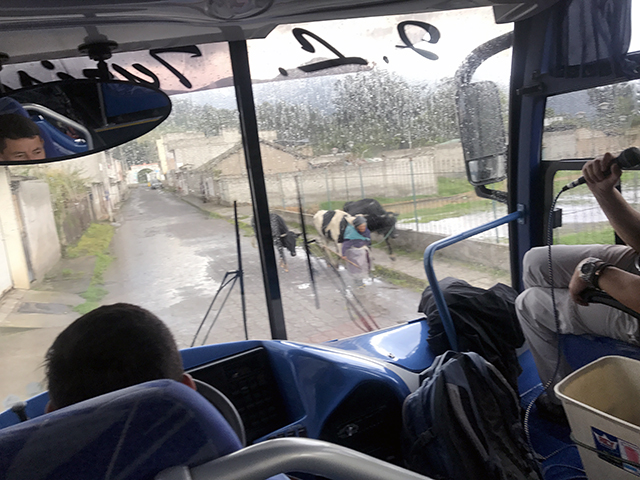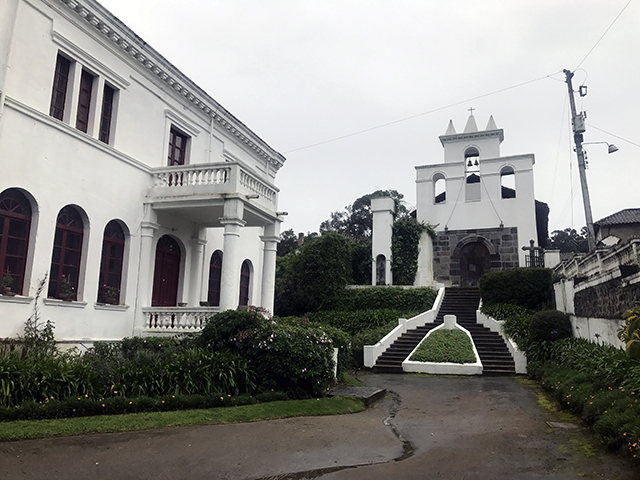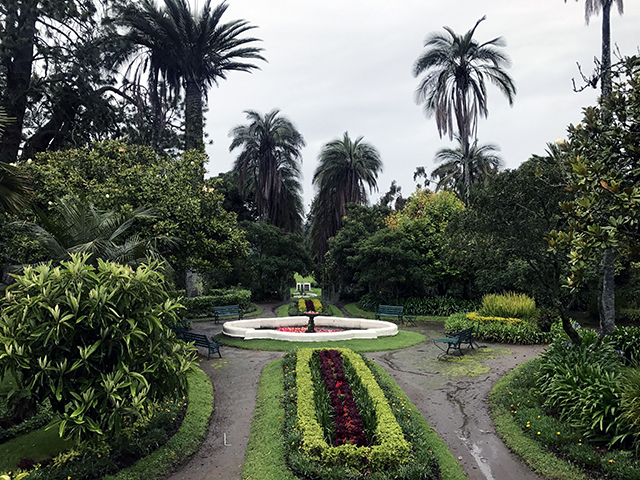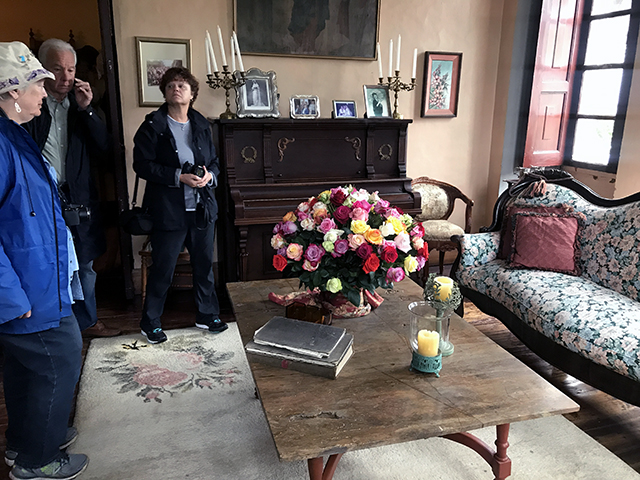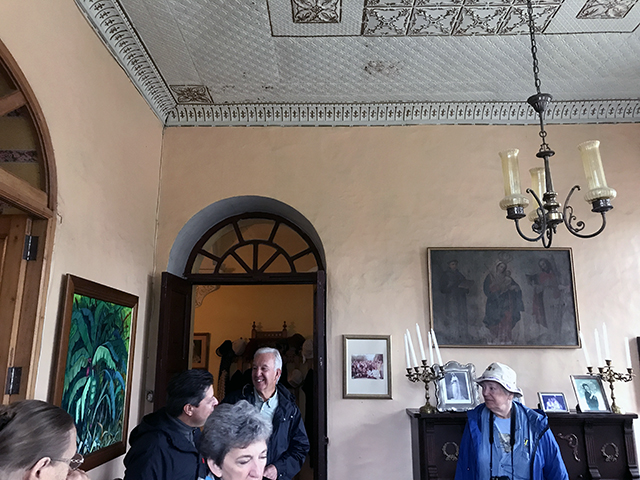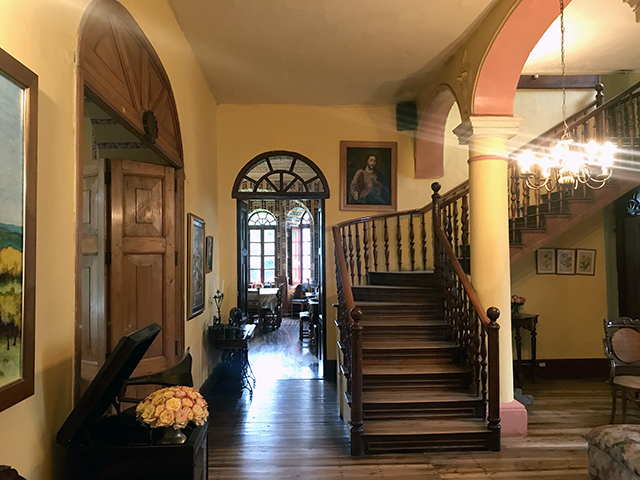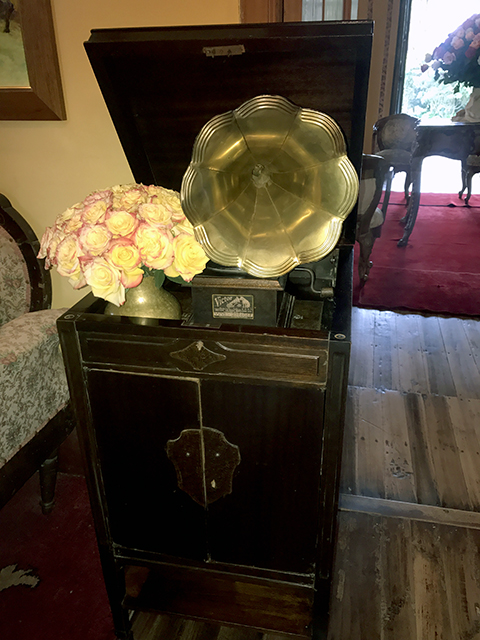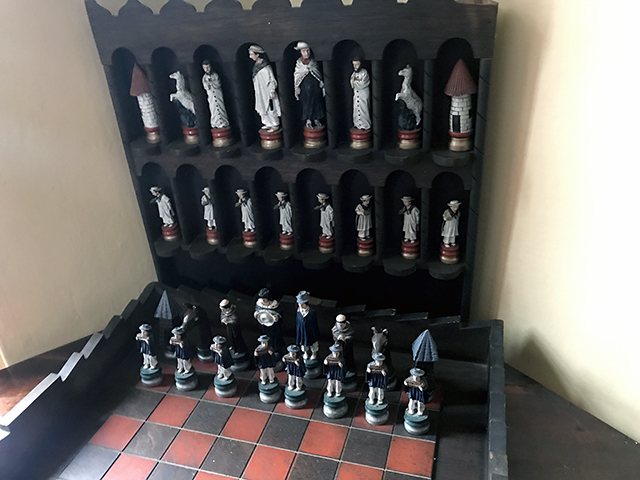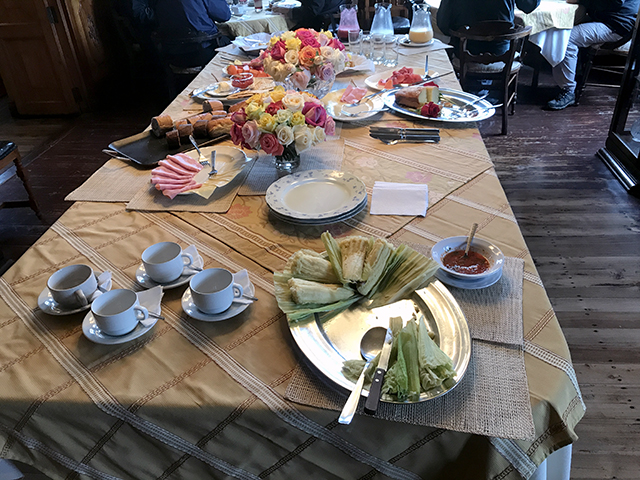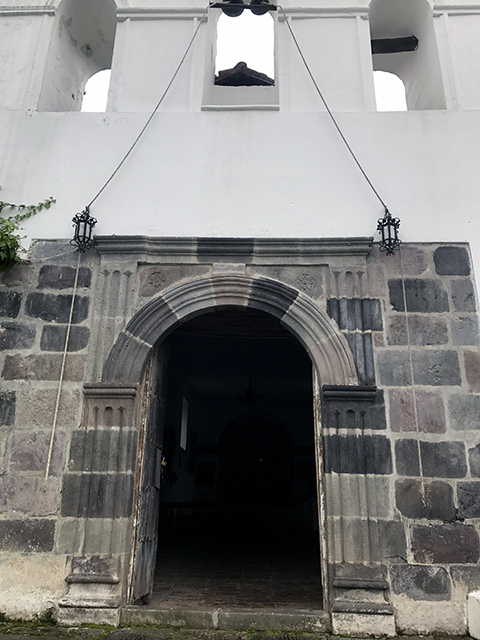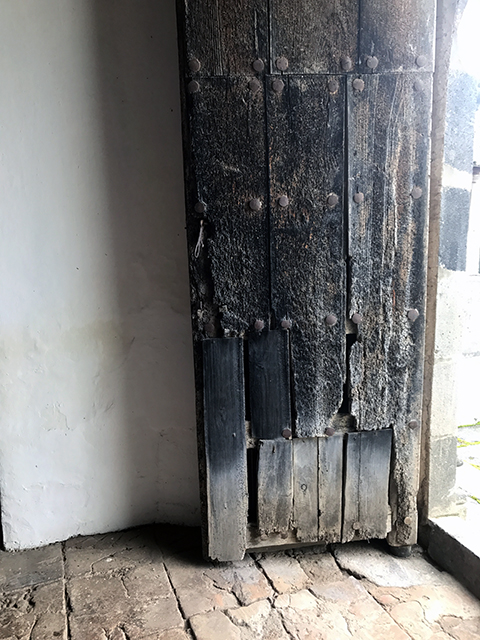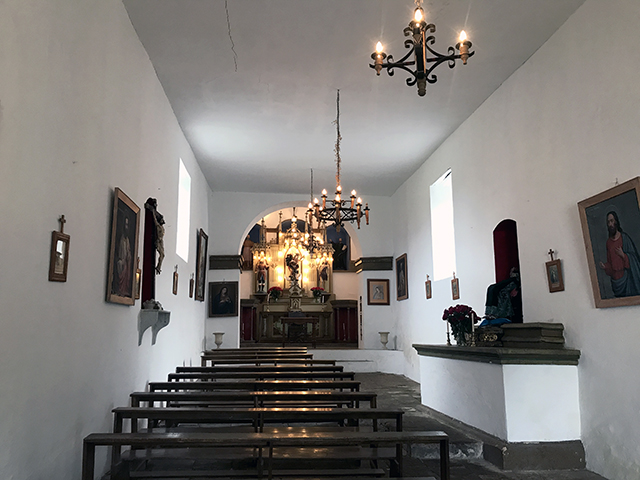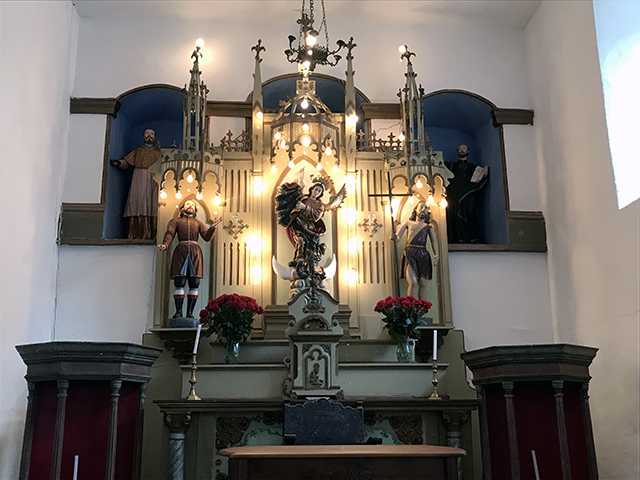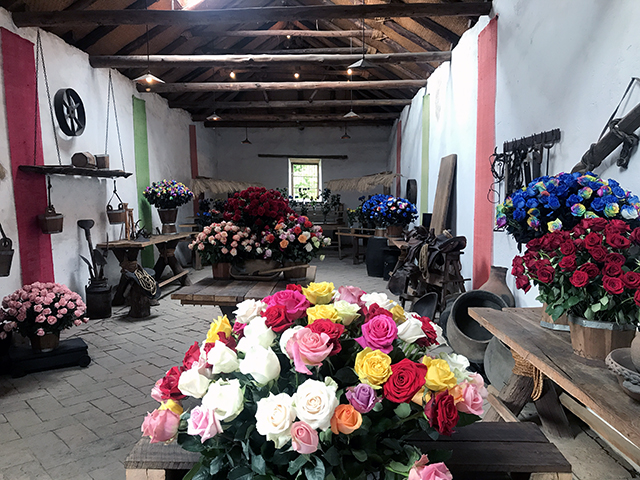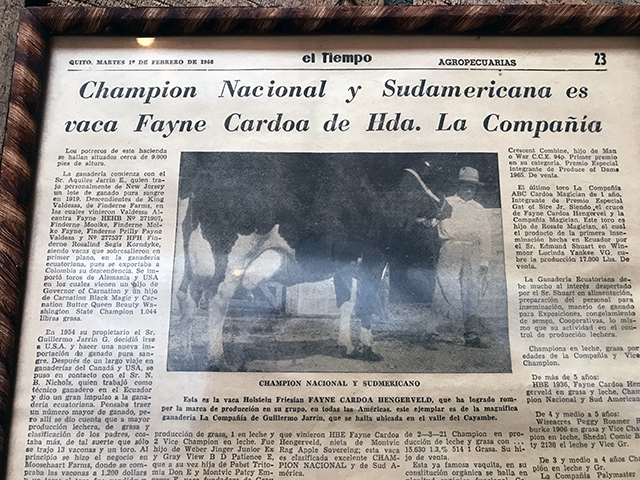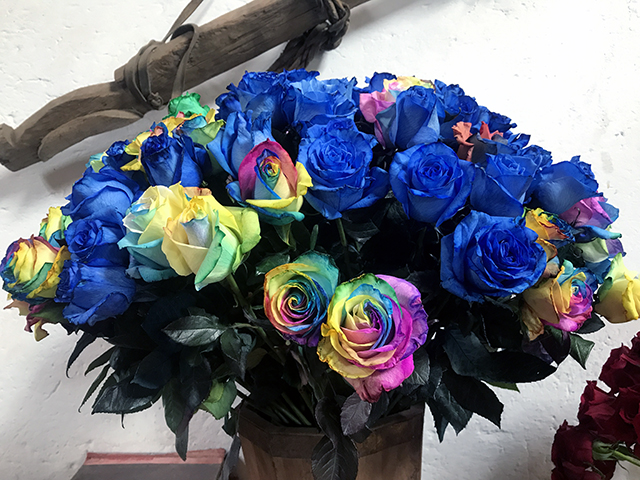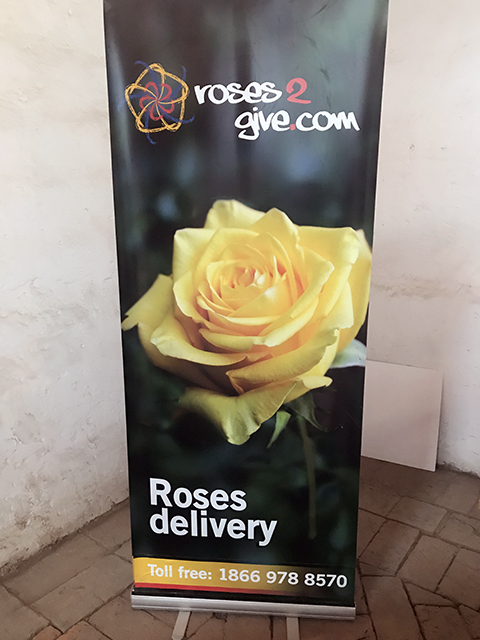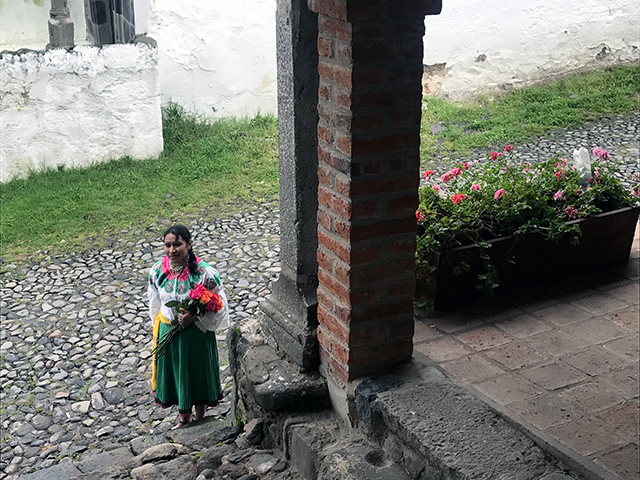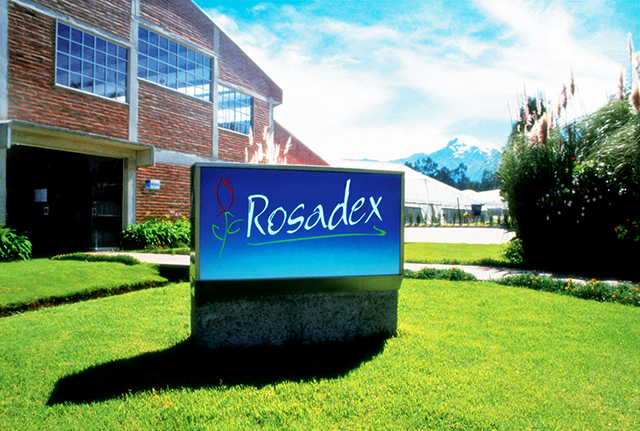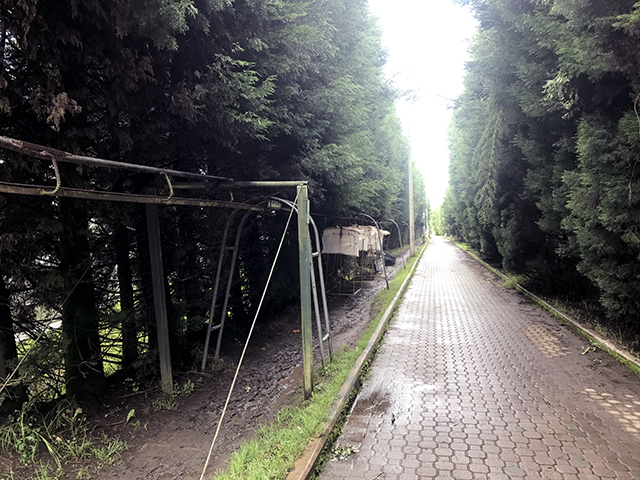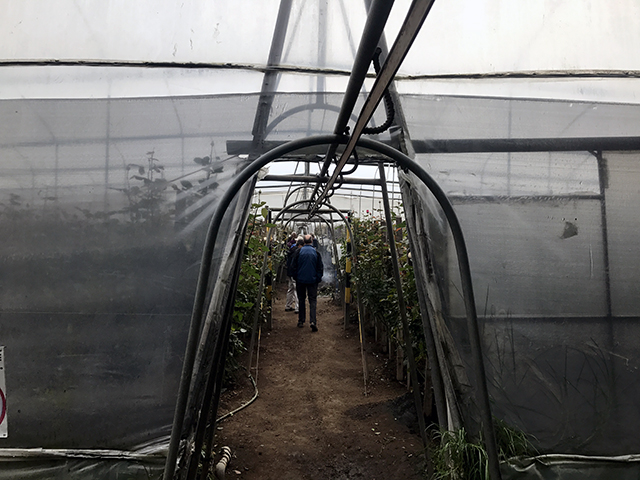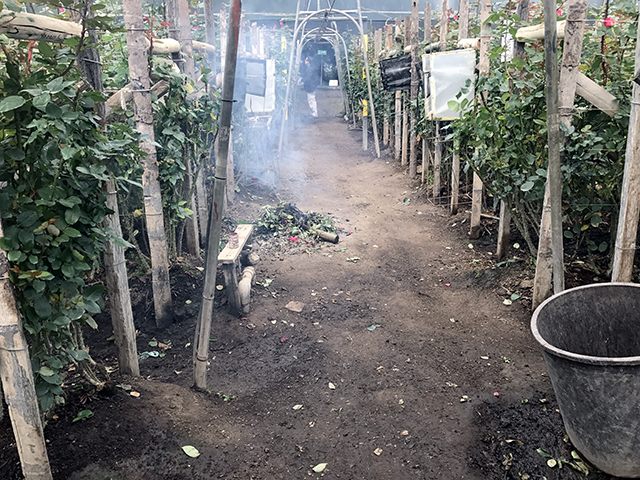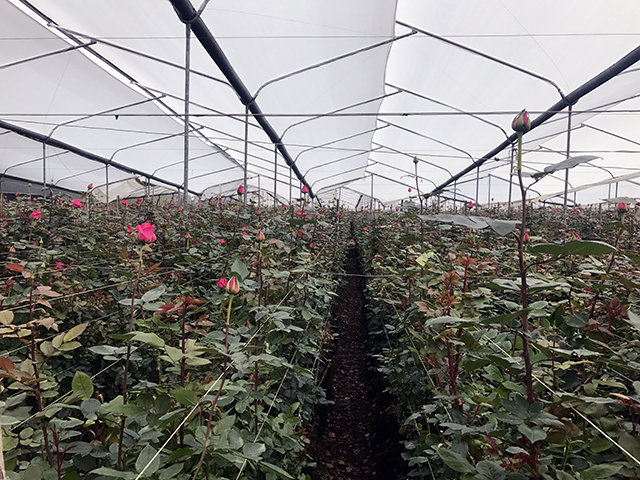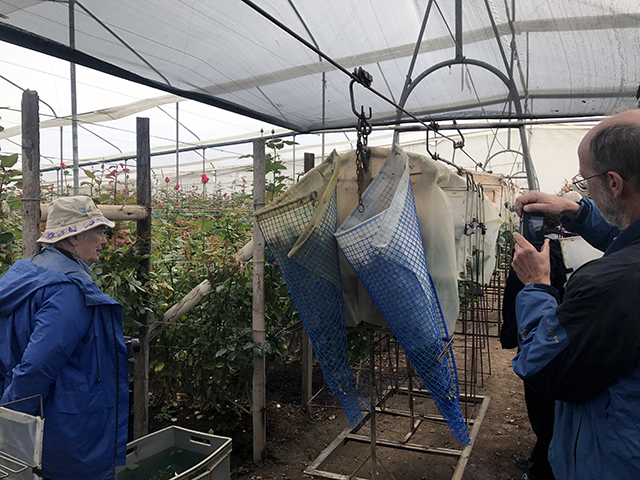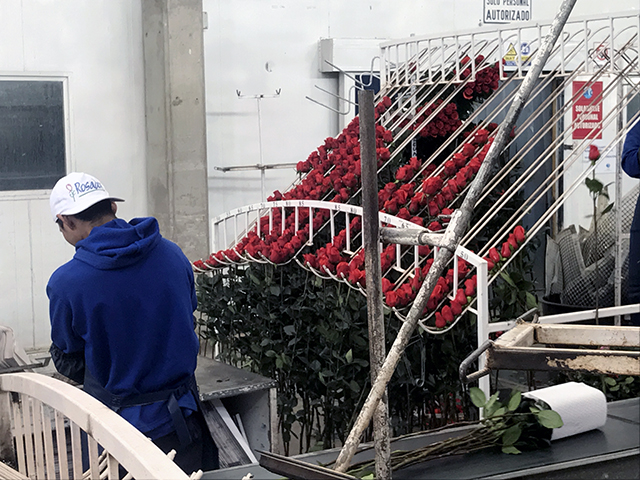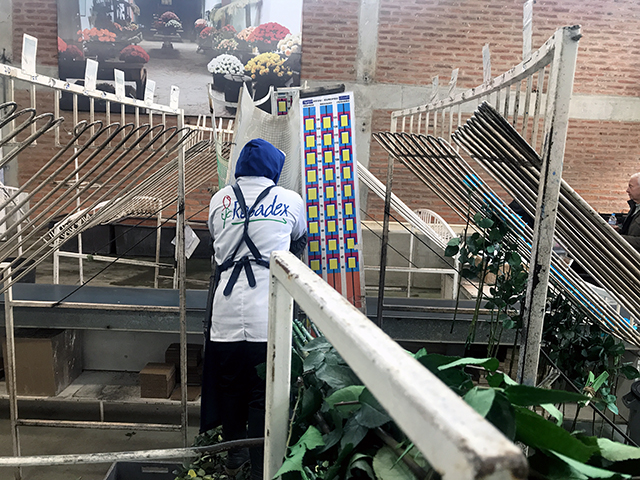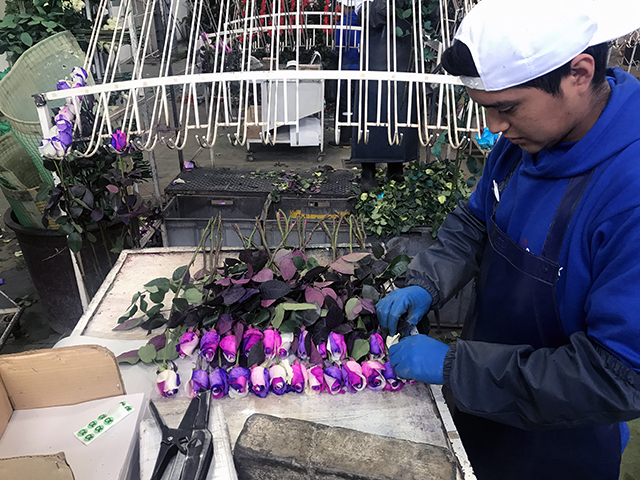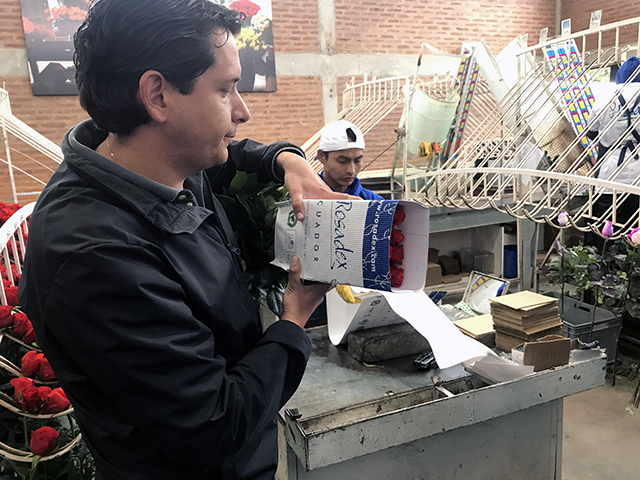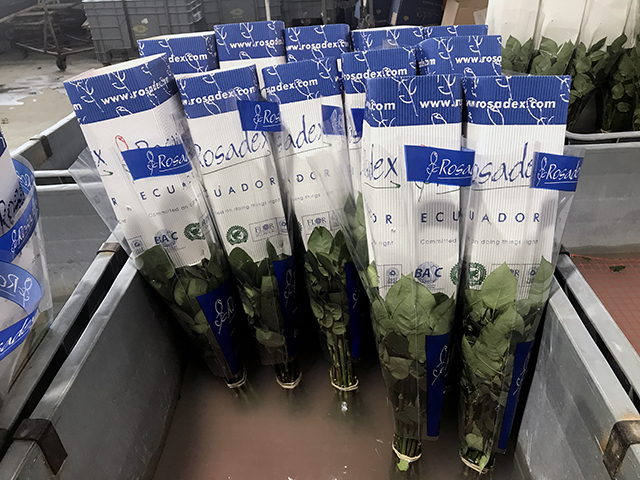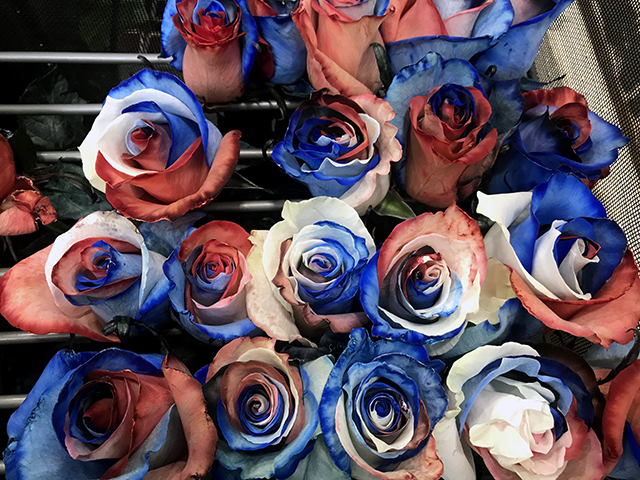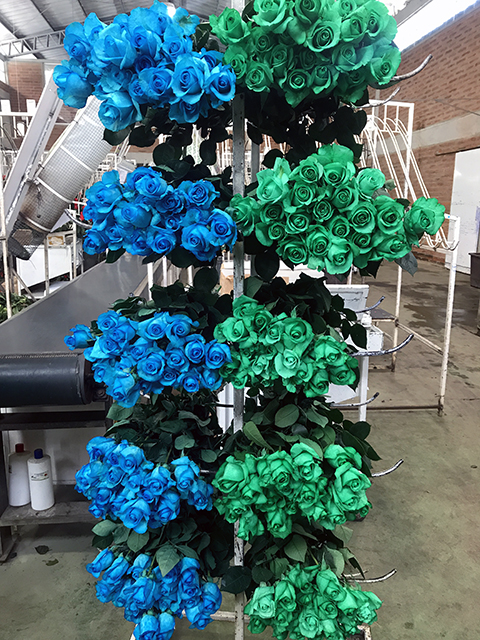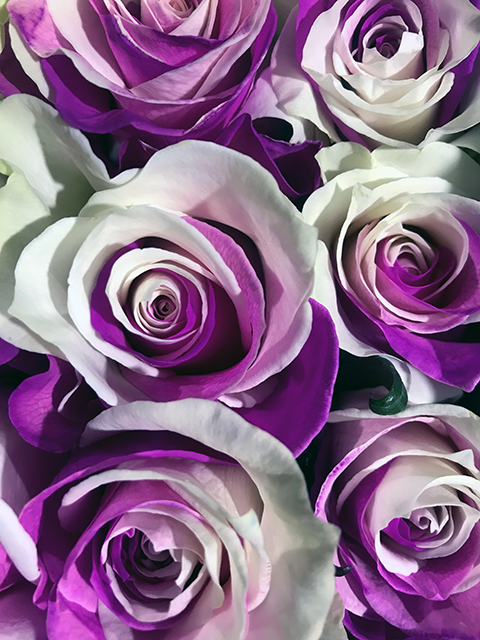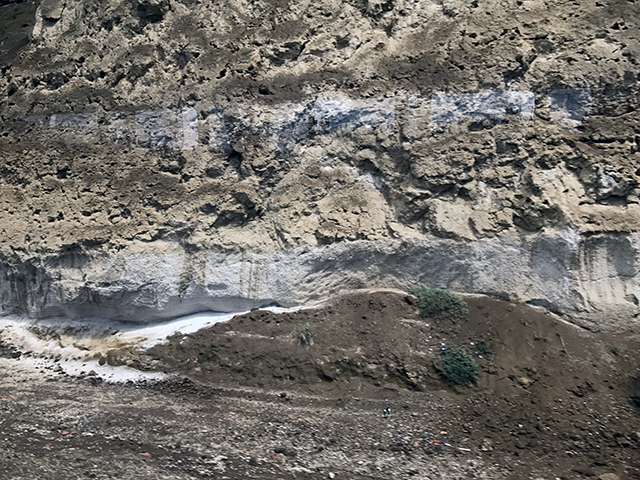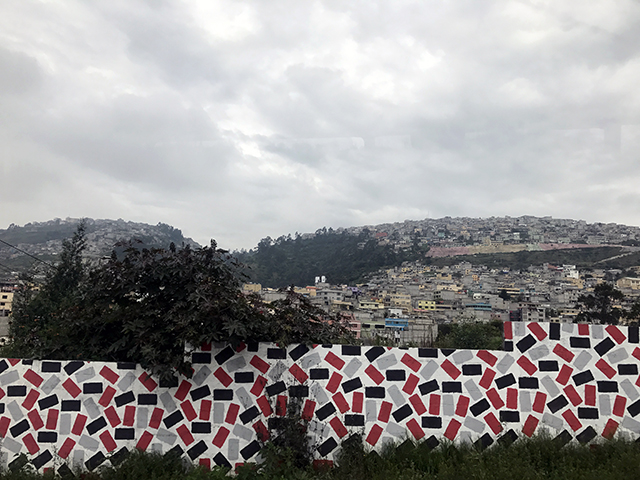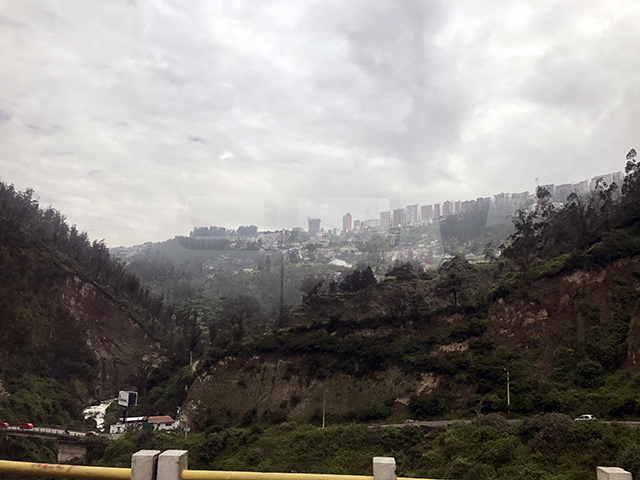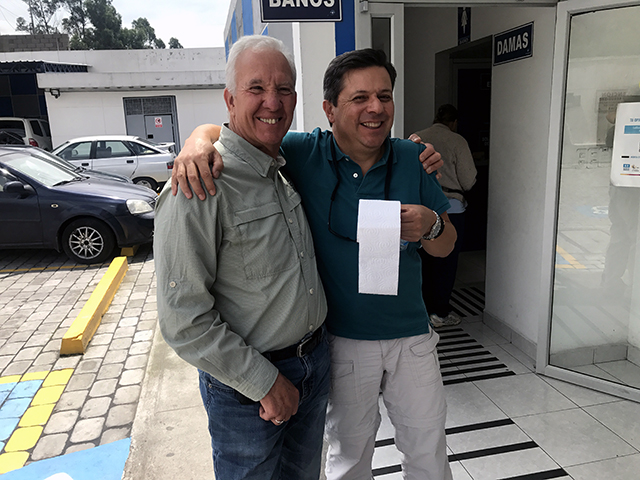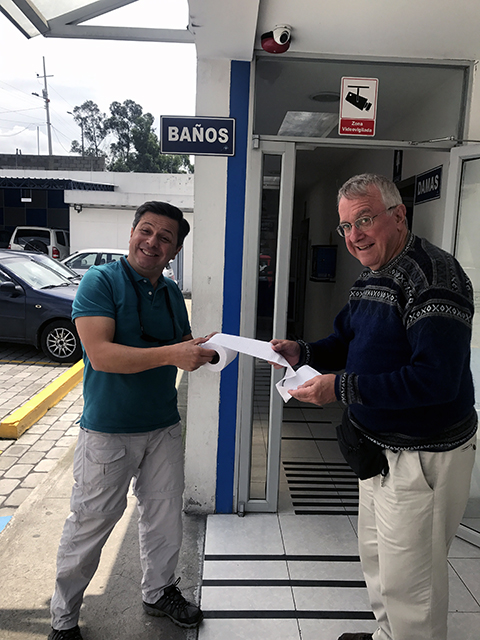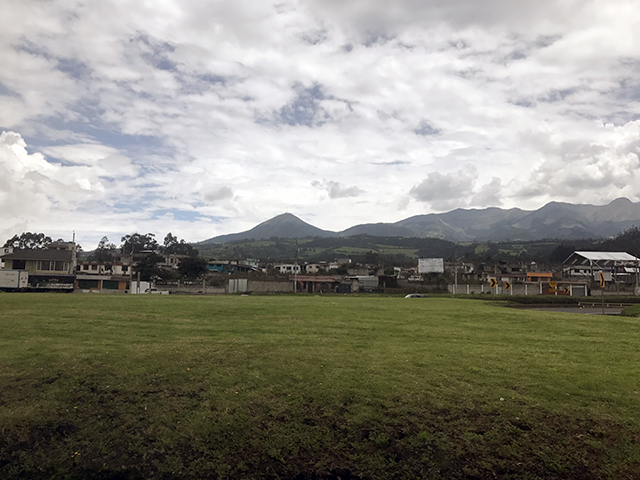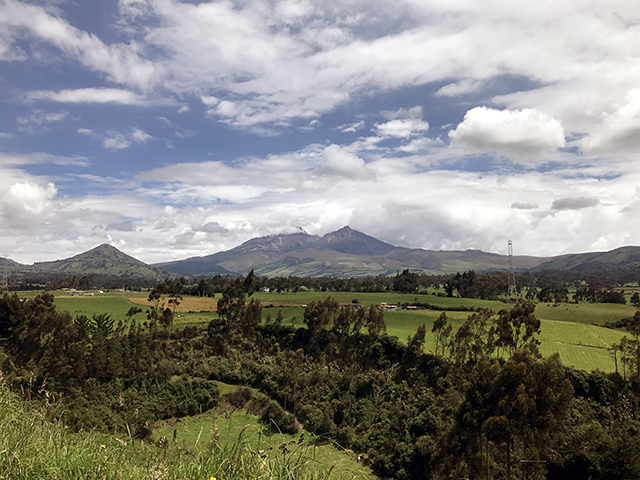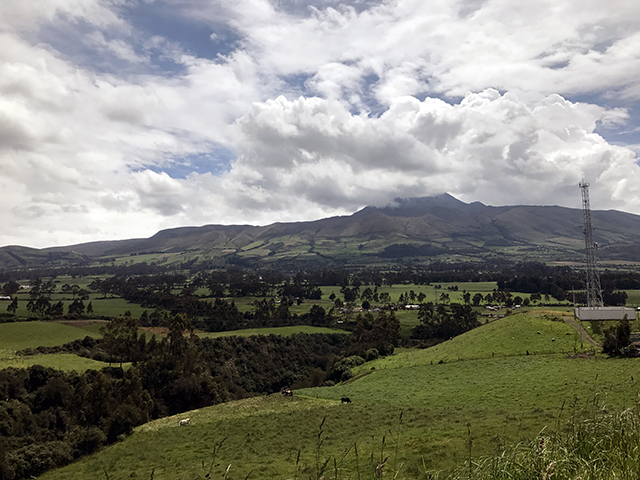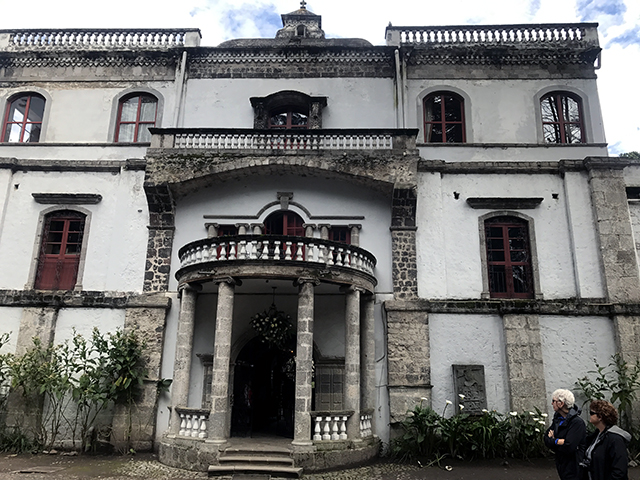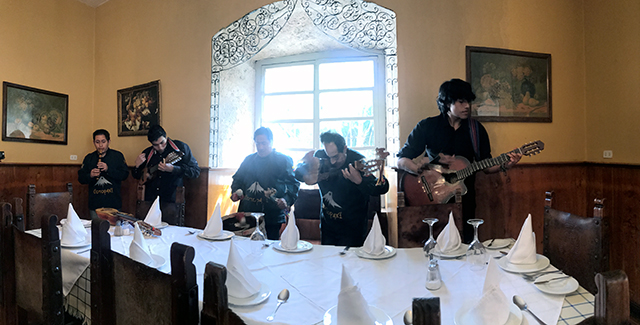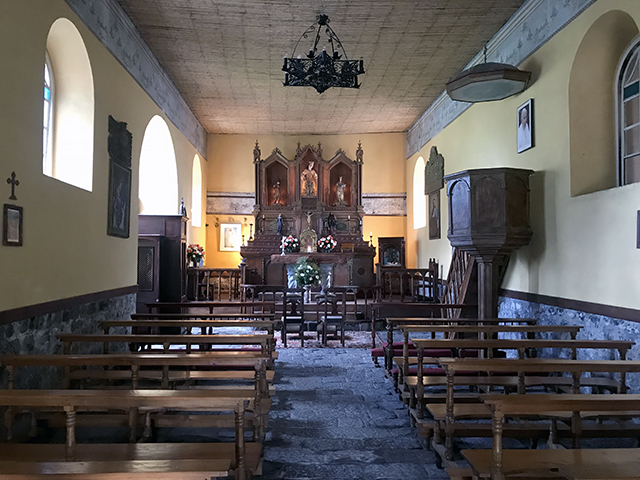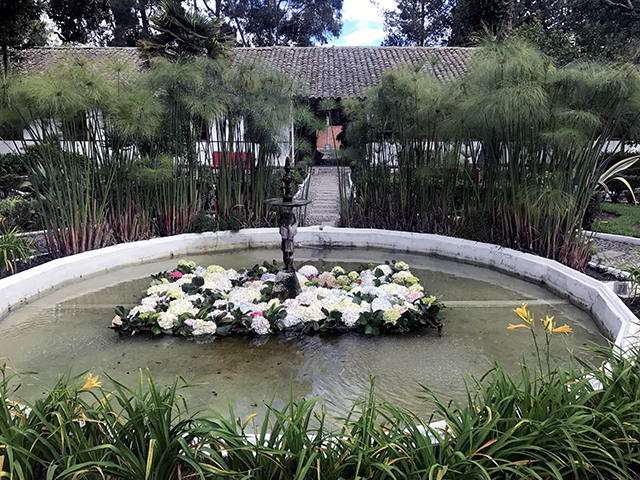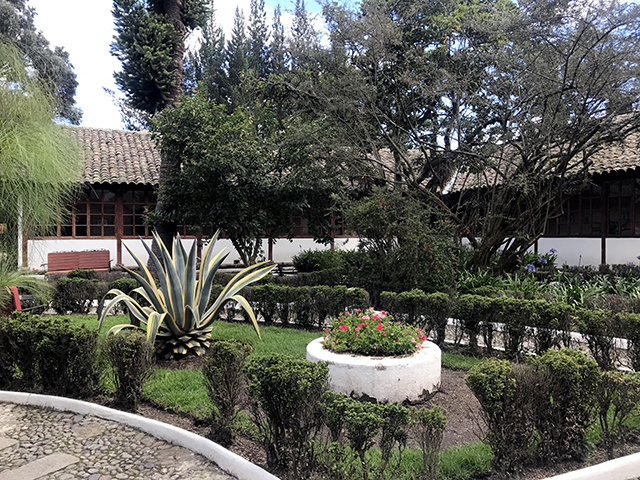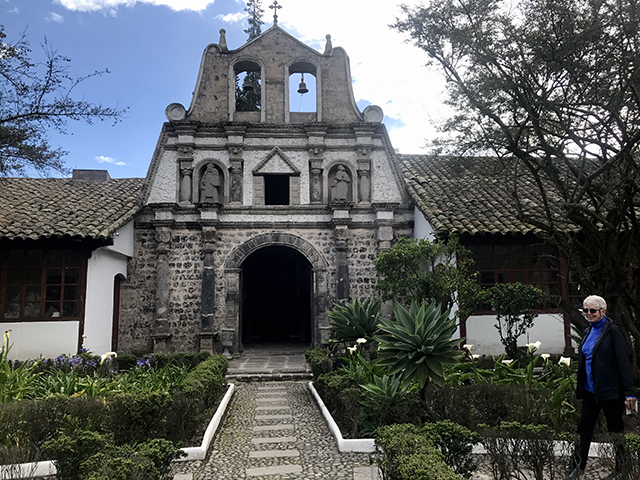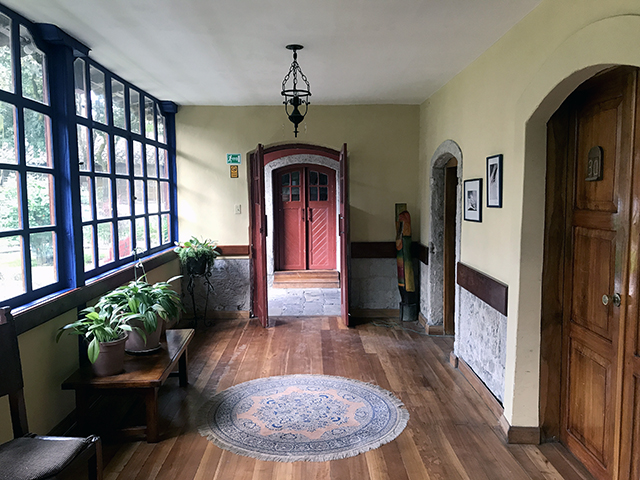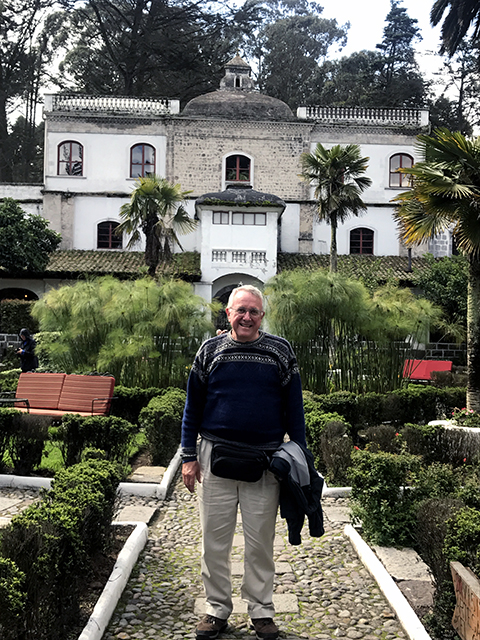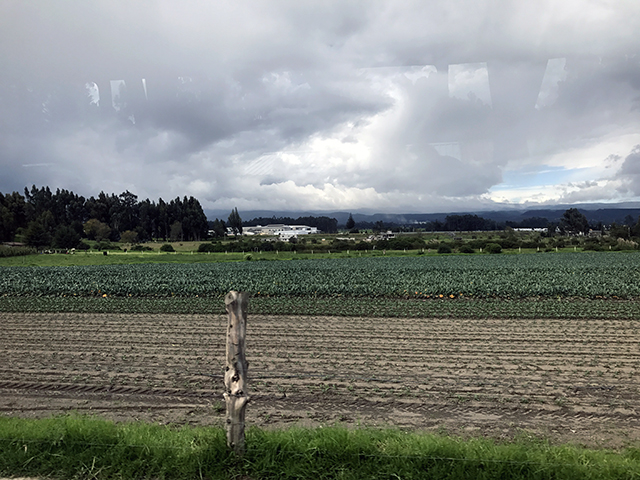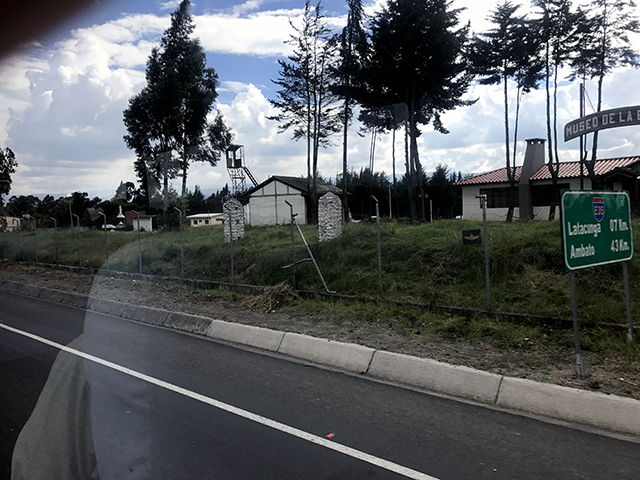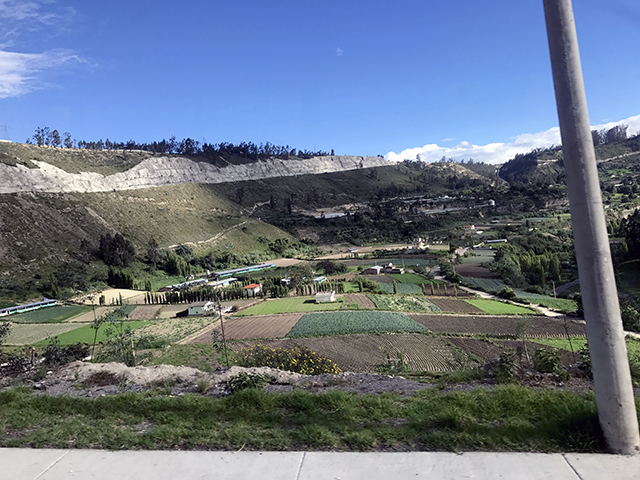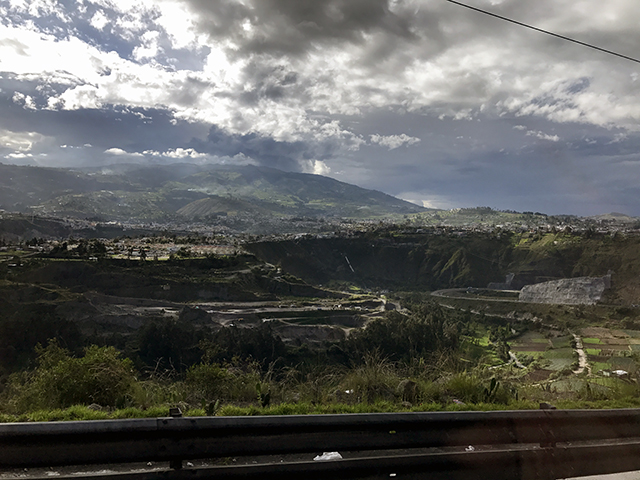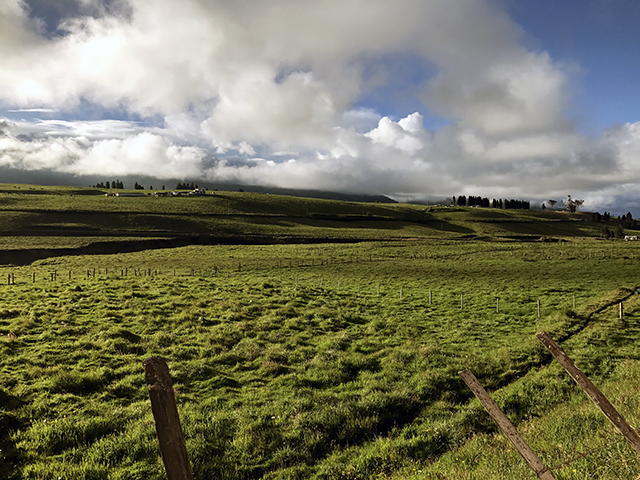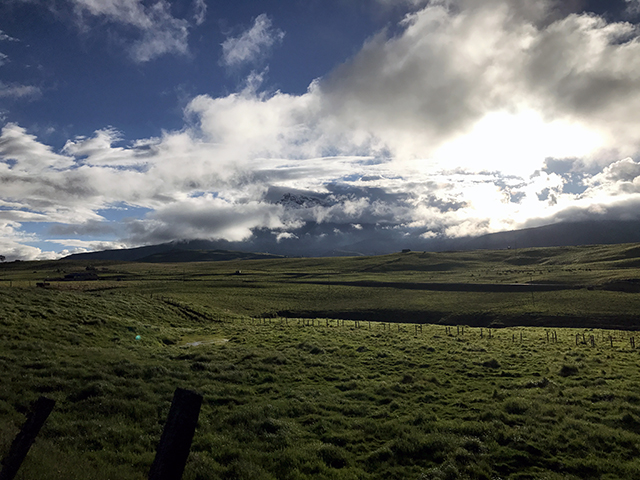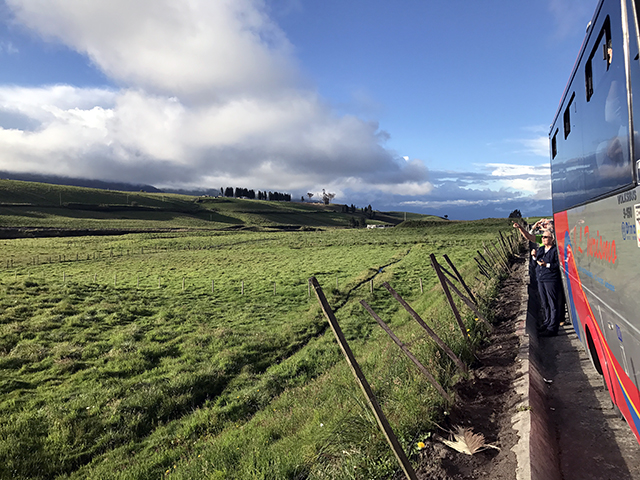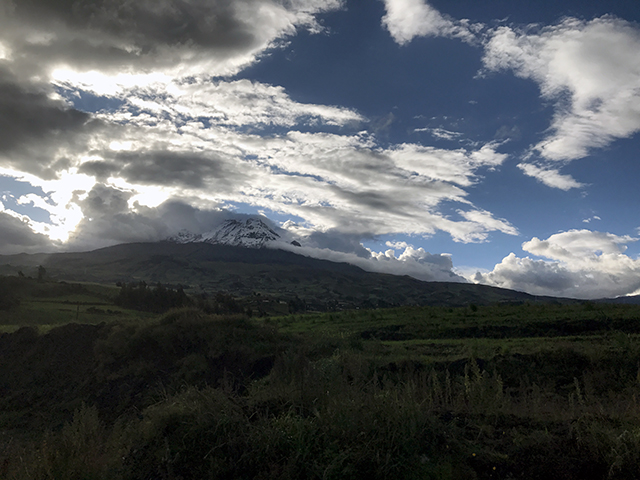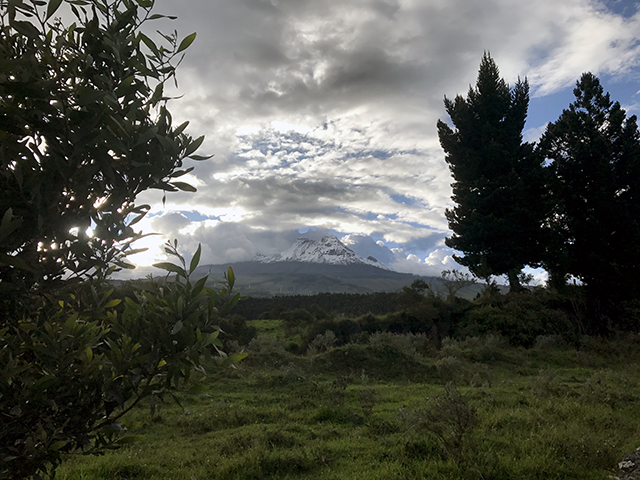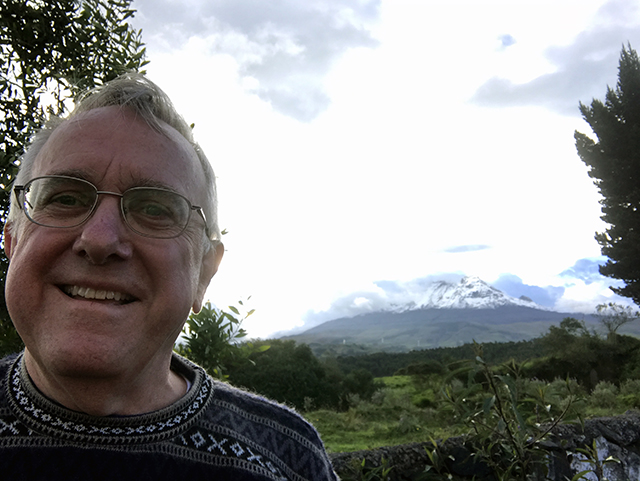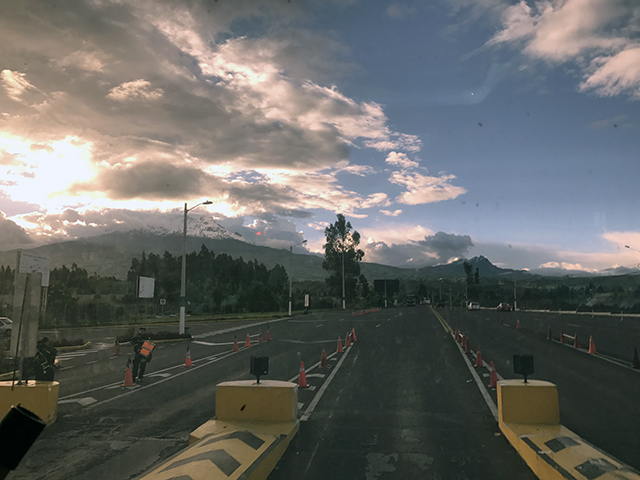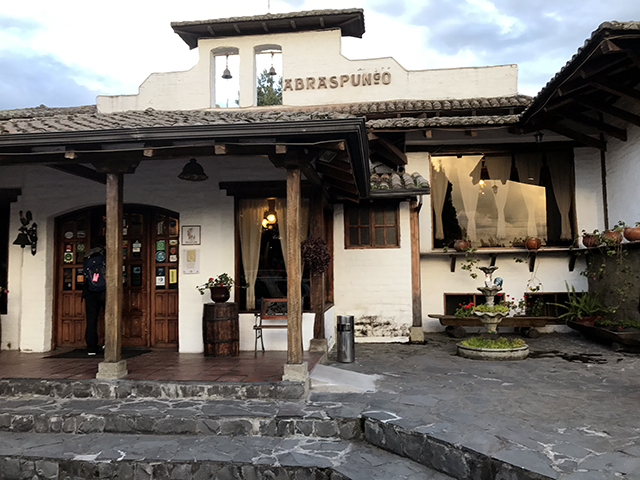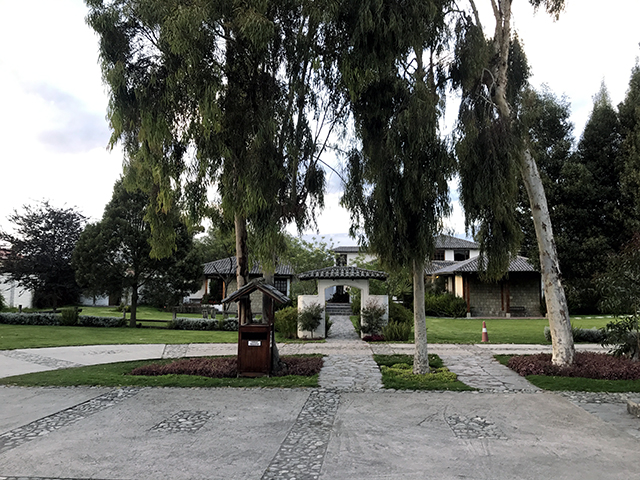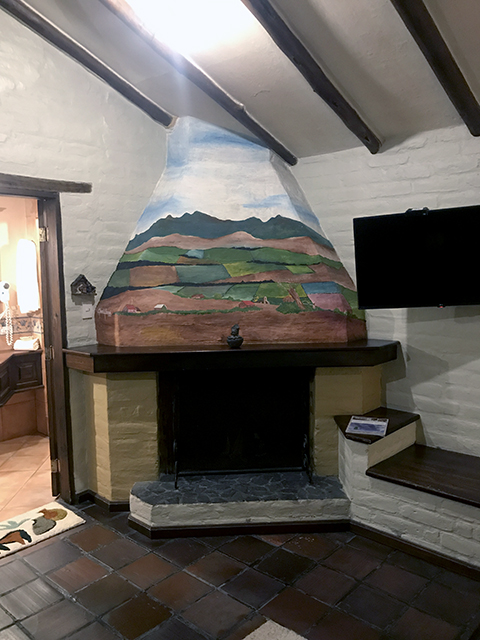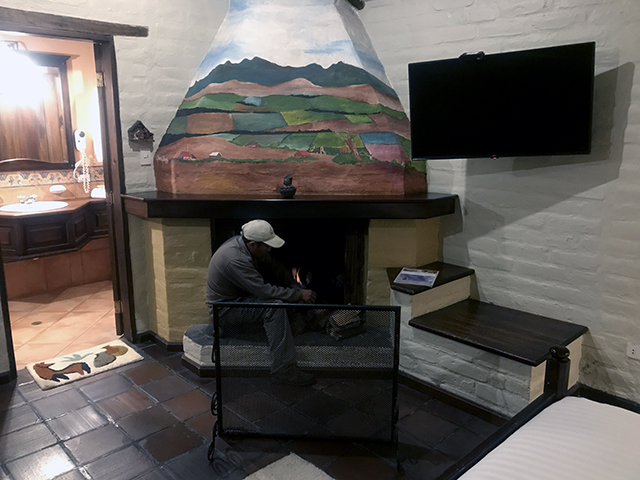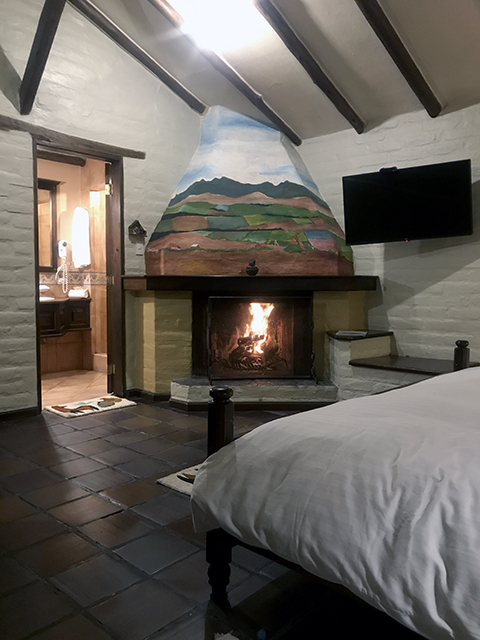|
No breakfast this dreary morning at the Hacienda Cusin.
Instead we check out and drive a short distance to ...
The name of this hacienda is LA COMPAÑÍA DE JESÚS because it belonged to the Jesuit order when they were established in Ecuador 300 years ago. In 1767, when the King Charles III expelled the Jesuits from Spain and all their colonies, they had to leave the hacienda and over the years its lands have changed hands and served various purposes. Until recently the hacienda was primarily a dairy farm, but now the lands are used more profitably in the production of roses, a booming Ecuadorian export.
This Hacienda has been in the Jarrin Family for 5 generations, it is still a family house, but in the past 15 years we have been offering different activities and services for visitors around the world.
Lovely garden; very classy
And just look inside.
This is a rose farm now, so naturally there are roses on display everywhere.
High ceilings.
Roses here.
Roses there.
Roses everywhere.
Even on the Victrola.
Nice chess set.
Preparing the table for breakfast.
The breakfast spread after the Road Scholars have had their way with it. That corn stuff in the foreground wasn't exactly like tamales, but almost, and it was delicious. See the little bowl just to the right of the corn? That's aji sauce and you'll find it on an Ecuadorian table at every meal. It varies from place to place, but it's always at least a bit spicy, and sometimes downright hot. In Ecuador you gotta add some spice to your meals.
OK, breakfast's over -- now let's have a look around the hacienda. Here's the old Jesuit chapel.
It's all original. The door and floor are over 300 years old.
Still nice.
Still in use.
And on the altar? Roses, of course.
Roses in the workshop.
To me that looks like a painting behind the roses, but it's actually a window.
Bill has found a display of clippings that show this farm once produced prize-winning dairy cattle. The family showed its livestock all over the world.
Are these roses pretty? You think so? Seriously? Me, I dunno.
But you can buy some if you want.
Bill was getting bored, so he wandered outside and found this sweet young lady.
Look...she gave him a rose. Wasn't that nice?
Now we're off to the area of the estate where they grow and process the roses. The company is called Rosadex.
They have a clever overhead trolley system for transporting the roses around the farm.
Let's go inside one of the greenhouses.
It's a little cool this morning, so an open fire keeps the rosebuds safe. And smoky.
Rows and rows of roses.
The factoid that impressed me most in all this was that as the farm is located practically on the equator, the sun always passes directly overhead which makes the rose stems grow straight up. Is that handy or what?
Roses are cut, bagged, and placed on the trolley, ready to be taken to the processing area.
Here's how it works.
It's not really a huge operation.
But the workers are swift and skilled.
Measure the stems against the chart and strip off the thorns. (Americans like short stems; Russians like long stems; Chinese like bright colors.)
I'll bet these are going to China.
This fellow was a member of the family that owns the place. He was very patient in explaining the whole operation. And, more important, he taught us how to keep roses fresh in the house for 14 days. You have to change the water every two days. And put into the water one tablespoon of white vinegar and one tablespoon sugar. The sugar will serve as food, and the vinegar wiill help keep the pores open so the roses continue to draw water. Also, be sure to trim the end of the stem of each rose at a diagonal every two days. Otherwise the end of the rose will clog up and the rose will not be able to draw water. There...now you know.
There are 24 roses in each bundle, but you can see only 12. See, I really was paying attention.
They're going to be shipped to the big flower auction in Aalmsmeer (Amsterdam), where they'll be sorted and shipped all over the world.
Maybe to a Fourth of July celebration in the USA? You know, the way they get the petals to take on different colors is by slicing white rose stems vertically in strips, and then placing the different strips in water with different colors of dye. One strip in red, one in blue, and the other in plain water, and the petals soak up color from whichever piece of the stem they're associated with. Red white and blue roses. Clever, huh?
Roses for a blue-green themed wedding in Beijing?
Or...now who could possibly want black roses? An emo prom?
There you go. Pretty roses. Now let's hit the road.
There are so many volcanoes around here that the hills are full of pumice deposits. Well, there's money to be made in pumice, so the locals over the years have excavated many pumice caves in the hills, sometimes right along roadways where the digging is easy. I kept trying to snap some shots of pumice caves, but they passed by so fast I always missed.
So here's a quick video to give you an idea.
As we headed back south from our explorations north of Quito, we passed houses in the poorer sections of the capital.
And then we saw how the rich folk live up high on the hill.
Have I mentioned you can never count on finding toilet paper at a public toilet in Ecuador?
Our ever-efficient guide Eduardo was always handy to meet our needs.
This area in the Andes is called the Avenue of the Volcanoes.
The peaks are all around and quite impressive in size and beauty.
But sometimes they're obscured by clouds.
We're doing a lot of driving today. Now we've arrived for lunch at Hosteria la Cienega (Official link in Spanish)
Hosteria La Cienega
(Another link, but in English) is one of Ecuador's oldest colonial
haciendas. Situated near the slopes of the majestic Cotopaxi volcano
and its National Park, this mansion has been the scene of important
happenings in the scientific and social history of the country.
It's a lovely old place where we will have a fine lunch.
This performing group takes its name from the nearby volcano.
And they're pretty good!
Just listen.
But sometimes you maybe would like a quiet lunch -- you know, after a quick meal reflect in the hacienda's old chapel.
Or stroll in the garden.
It's a very nice garden.
The old Spanish landowners knew how to build pretty haciendas.
Lowell admires the chapel.
A quiet hideaway.
The garden is probably the best feature of the place.
Bill certainly likes it.
Now we're hitting the road again. Lots of traveling to do today. Know what's growing in the field? Broccoli. They grow a lot of broccoli around here, according to Eduardo.
Things speed by the bus so fast it's hard to get a picture. I wanted to show people back home how much the road markers resemble Interstate Highway signage back home. See the E35 badge that almost escaped my camera? Look familiar?
Sights along the road.
Nothing in particular. Just pretty stuff.
I discovered that if I ride in the back seat it's easy to jump from one side of the bus to the other to snap pics of interesting sights.
So back there behind the clouds somewhere is Mount Chimborazo, the highest mountain in the world.
It's back there, seriously. Somewhere.
And no kidding, it really is the highest when measured not above sea level (that would be Everest) but above the center of the earth. That's right, Chimborazo sticks out further toward space than Everest because the earth bulges at the equator, which means it starts higher than Everest starts. And now you know.
Everybody has piled out of the bus to get a picture of the peak of Chimborazo, but there are too many clouds in the way.
So use your imagination.
That's one big volcano. It's even got snow -- see?
So what if you can't see the top?
Bill's certainly impressed.
He even tried one last picture out the rear window of the bus, but to no avail.
Ah, our home for the night. Abraspungo in Riobamba. Say that three times real fast.
It was a very nice place with rooms spread out over a large area. And Bill could even get WiFi if he stood on his porch.
But inside was a beautiful fireplace. Bill wondered if later in the evening somebody would stop by to light a fire.
And he wasn't disappointed. Here's what happened after dinner. This guy knocked on the door and brought firewood into the room and lit things up and left and ...
The fire began to blaze and the room filled with smoke and Bill grabbed that bath mat over there and opened his door and fanned and fanned and fanned and finally gave up and went to bed and closed his burning eyes and went to sleep. He could've complained but he was tired and he wasn't ready for any late night drama. He just hoped he'd wake up in the morning.
|

